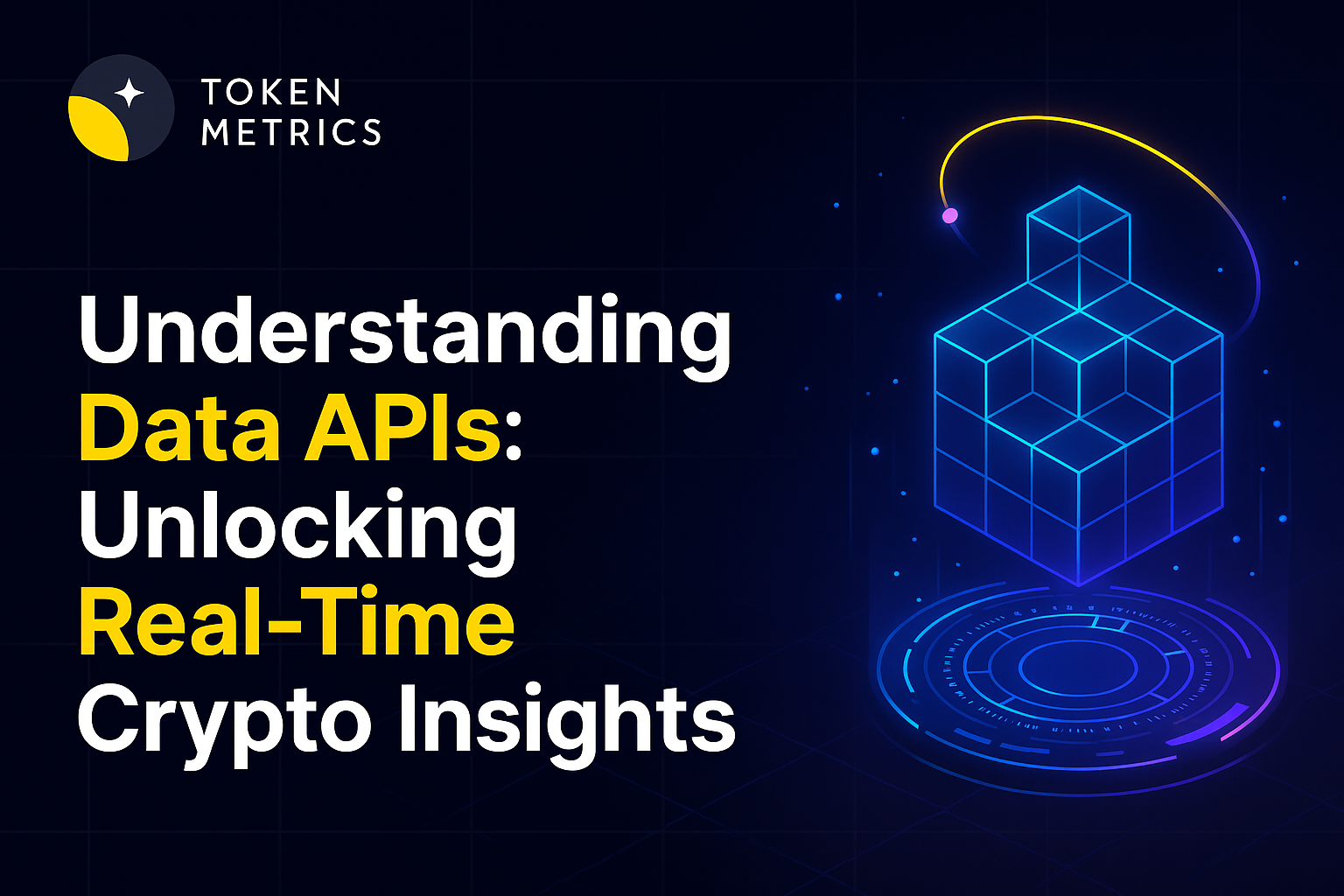
Understanding Data APIs: Unlocking Real-Time Crypto Insights

Introduction to Data APIs
In the ever-evolving landscape of digital technology, data APIs have become fundamental tools that enable seamless data exchange between software systems. APIs, or Application Programming Interfaces, function as bridges that allow different applications to communicate and share data efficiently. Specifically, in the cryptocurrency domain, data APIs provide access to crucial market and blockchain data essential for analysis, development, and trading activities.
What Is a Data API?
A data API is a set of protocols and tools that allows developers to access and manipulate structured data from an external service or database. Unlike general APIs, data APIs focus on delivering datasets that can be used for analytics, reporting, and decision-making. These interfaces often provide endpoints for querying real-time or historical data, enabling users to fetch information on demand.
Importance of Data APIs in Crypto
In cryptocurrency markets, rapid access to accurate and reliable data is paramount. Data APIs serve as the backbone for developers, analysts, and traders to obtain:
- Real-time prices and market trends
- Historical trade data for backtesting
- Blockchain metrics such as transaction volumes and network health
- Sentiment and fundamental analysis data powered by AI tools
Given the volatile and decentralized nature of crypto assets, data APIs enable participants to build data-driven models and tools, enhancing transparency and operational efficiency.
Key Features of a Robust Data API
When selecting or utilizing a data API, it is important to consider several critical features:
- Data Accuracy: The API should deliver verified and precise data, minimizing discrepancies.
- Real-Time Access: For trading and analytics, the ability to retrieve live data streams is essential.
- Comprehensive Coverage: Access to a broad spectrum of assets, exchanges, and market indicators diversifies analytical capabilities.
- Scalability: APIs must support increasing data volume and user requests as usage grows.
- Documentation & Support: Clear documentation facilitates integration and minimizes development overhead.
Introducing the Token Metrics API
Token Metrics API represents a sophisticated solution designed to provide comprehensive cryptocurrency market data and analytics through an accessible interface. It delivers AI-driven insights, fundamental metrics, and market data that empower developers and analysts to augment their research and applications.
The API supports multiple endpoints facilitating data retrieval including price history, on-chain analytics, sentiment metrics, and other fundamental indicators. This breadth and depth make it a valuable tool for anyone seeking structured and actionable crypto data.
Practical Uses of Data APIs
Data APIs serve various practical purposes in the crypto ecosystem, including but not limited to:
- Crypto Trading Platforms: Integrating data APIs enables platforms to display live price feeds, order books, and trade execution data for users. Leading crypto trading platforms leverage these data streams to enhance user decision-making.
- Portfolio Management Tools: Accurate portfolio valuation requires real-time price data accessed via APIs.
- Research and Analytics: Analysts utilize data APIs to collect, aggregate, and analyze detailed market and fundamental data to uncover trends and evaluate asset health.
- Automated Trading Bots: Bots depend on fast and consistent market data through APIs to execute strategies algorithmically.
How AI Enhances Data API Usage
The integration of artificial intelligence with data APIs introduces new possibilities for crypto research and analytics. AI models can analyze vast quantities of data accessed through APIs to generate insights such as predictive analytics, sentiment scoring, and risk evaluation.
For example, Token Metrics incorporates AI-driven analytics that complement raw data by producing research-based ratings and forecasts to help users interpret complex market dynamics efficiently.
Best Practices for Using Data APIs
- Understand Data Limitations: Always recognize that data APIs are subject to latency, data update schedules, and potential inaccuracies.
- Ensure Security: Use secure authentication methods (such as API keys or OAuth) to protect access.
- Monitor Data Quality: Implement checks to detect anomalies or inconsistencies in data streams.
- Efficient API Usage: Follow rate limit guidelines and optimize queries to reduce redundant calls.
- Leverage AI Analytics: Combine data API feeds with AI research tools like those from Token Metrics for enhanced insights.
Integrating the Token Metrics API
Developers aiming to incorporate crypto data into their applications can utilize the Token Metrics API for a reliable source of market and analytic data. The API features RESTful endpoints with JSON responses, making it straightforward to integrate with modern development stacks.
Comprehensive documentation guides users through authentication, available endpoints, and example queries, allowing efficient adoption. Users can tailor data requests to fit varying needs, from simple price retrieval to complex on-chain metrics.
Conclusion
Data APIs are indispensable tools for accessing structured and real-time cryptocurrency data that power research, analytics, and trading platforms. Choosing a robust and reliable API, such as the Token Metrics API, enables more informed and data-driven operations in the fast-paced crypto space.
Combined with AI-driven analytical tools like those from Token Metrics, data APIs unlock deeper insights by converting raw data into actionable intelligence without any promotional bias or investment recommendations.
Disclaimer
This article is for educational purposes only and does not constitute financial, investment, or trading advice. Users should conduct their own research and consult professionals before making any financial decisions.

.svg)

Create Your Free Token Metrics Account

.png)




%201.svg)
%201.svg)


%201.svg)









.svg)




.png)